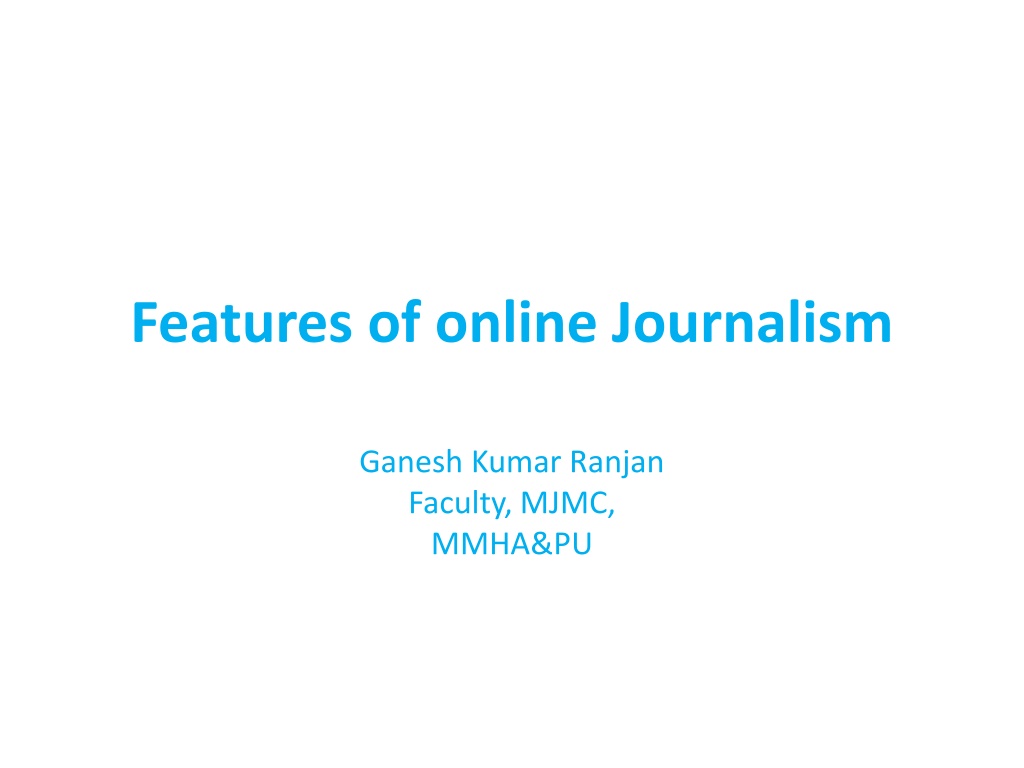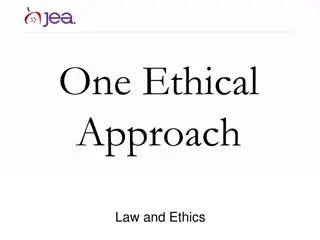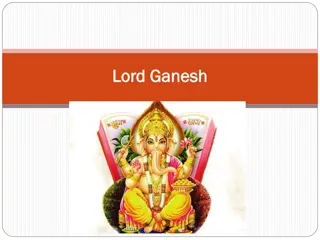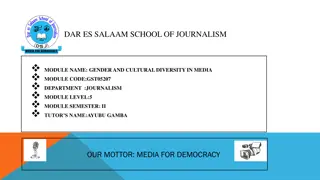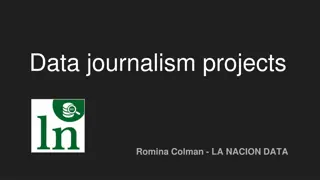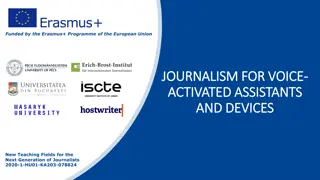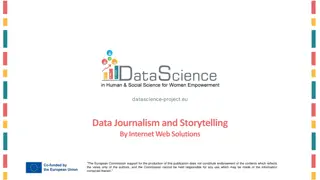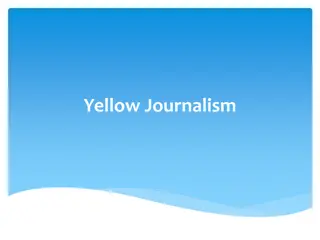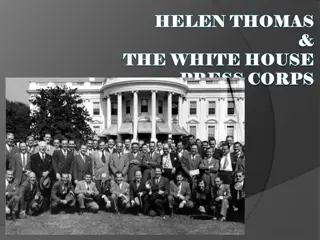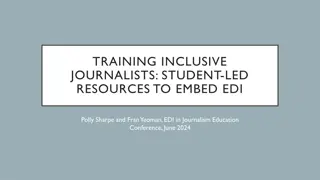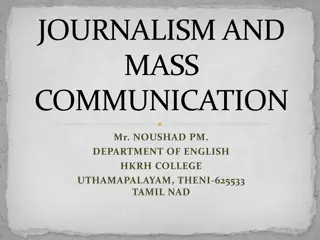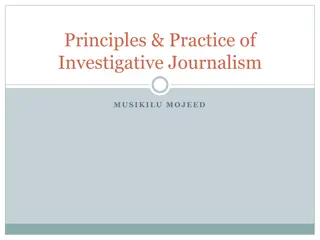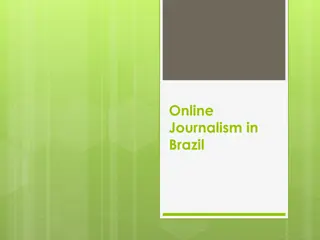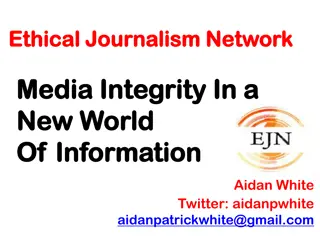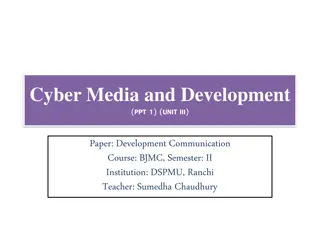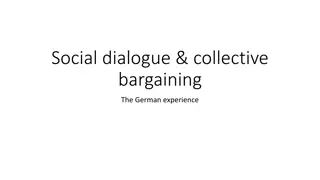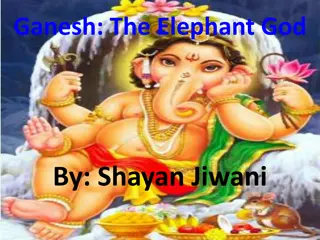Understanding the Features of Online Journalism by Ganesh Kumar Ranjan
Online journalism features hypertextuality, interactivity, multimediality, and immediacy. Hypertext enables multi-linearity and multi-vocality, changing the narrative paradigm. Active reading allows readers to navigate content with flexibility, though it may challenge authors’ control. Ganesh Kumar Ranjan discusses the emergence of hypertext and its impact on journalism, emphasizing the importance of these key features.
Download Presentation

Please find below an Image/Link to download the presentation.
The content on the website is provided AS IS for your information and personal use only. It may not be sold, licensed, or shared on other websites without obtaining consent from the author. Download presentation by click this link. If you encounter any issues during the download, it is possible that the publisher has removed the file from their server.
E N D
Presentation Transcript
Features of online Journalism Ganesh Kumar Ranjan Faculty, MJMC, MMHA&PU
Online journalism is digital form of journalism. Several websites, blogs, digital photo journalism, citizen journalism and social media are different types of journalism. There are four main features of online journalism Hypertextuality Interactivity Multimediality Immediacy
Hypertextuality If you move cursor through a web page, it changes into hand shape with extended index figure as it passes over some word or set of words. It changes to inform you that this is a link which will open if you click. This is implemented through a programming language called HTML (Hypertext mark-up language). HTML is concept coined by Theodre Nelson in 1962. We can see its origin way back to 1945 by Veneber Bush. He was a engineer and called it MEMEX.
The emergence of hypertext was a paradigm shift, which was not taking place in the field of computer technology, but also in critical theory. This shift was from conceptual system of linearity to non-linearity and multivocality, which has become evident in many other disciplines. This multilinearity is also evident in print and oral medium. Importance of hypertext Multi-linearity Multi-vocality Active reading Decentring
Multi-linearity It provides a tool to produce story in multi-linear form. In other mediums editorial person decides to provide an angle to the story. The reason for this is lack of space. In online medium there is no lack of space and hypertext provides technical support to do so. Limitation This may be a problem for a journalist as his story lacks the closure or he may unable to ensure that the reader gets same message, journalist wants to present.
Multi-vocality Hypertext not only provides multi-linearity but also multi-vocality. Through linking journalist can give space to all the voices on a certain incident. It leads to unbiased coverage and providing wholeness to the story. Hypertext does not provide tyrannical univocal voice.
Active reading It provides active reading as hypertext gives multiple options to readers. Hypertext gives readers various options to read. Readers can switch over from one story to another any time. Hypertext enables readers to read according to their choices. Limitation Again, it implies a partial loss of control on the part of the author. But it can be seen in another way also. If author can be a hidden master of maze , then no matter which path does reader takes. Whichever path they take the configuration of maze will be the same.
